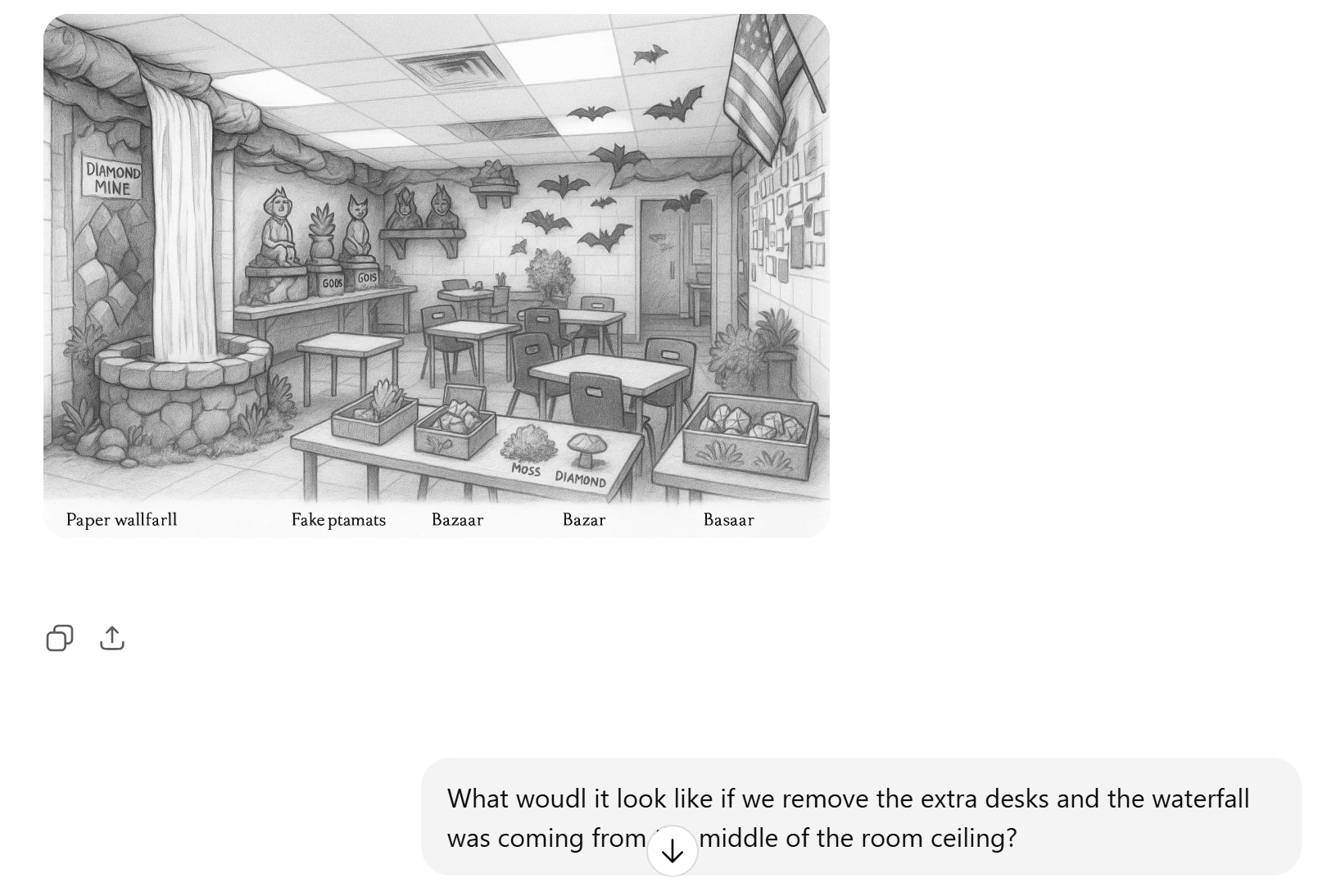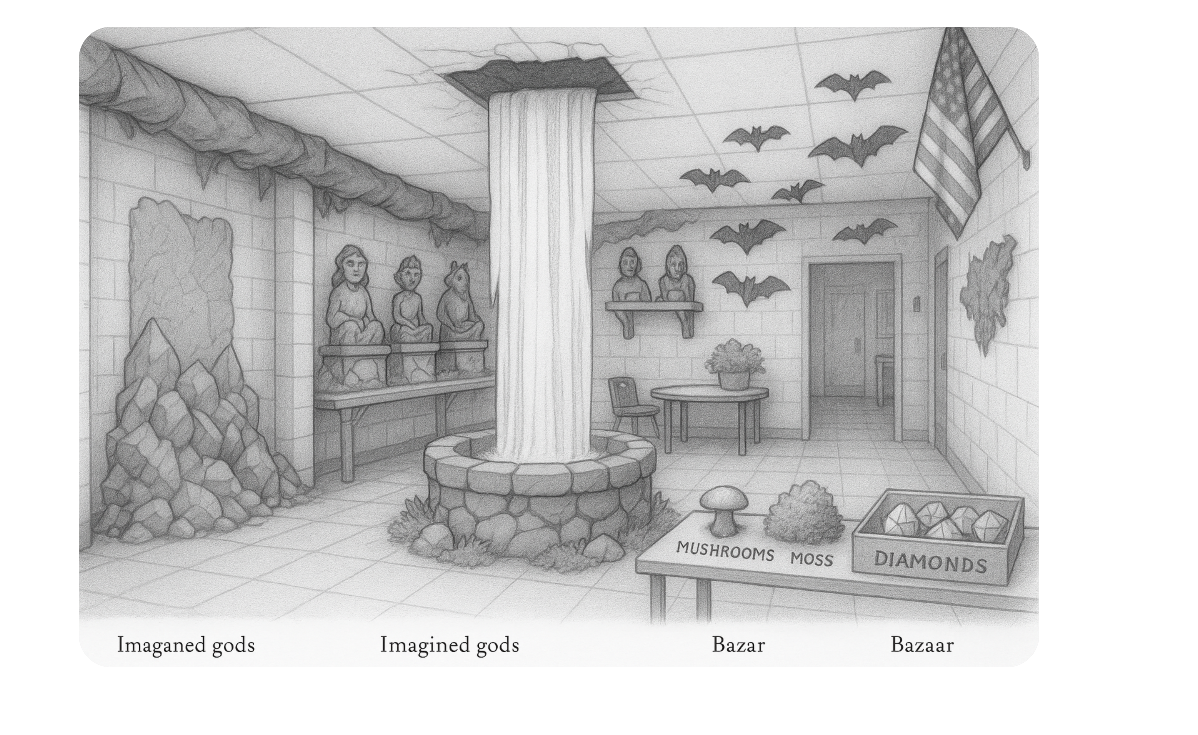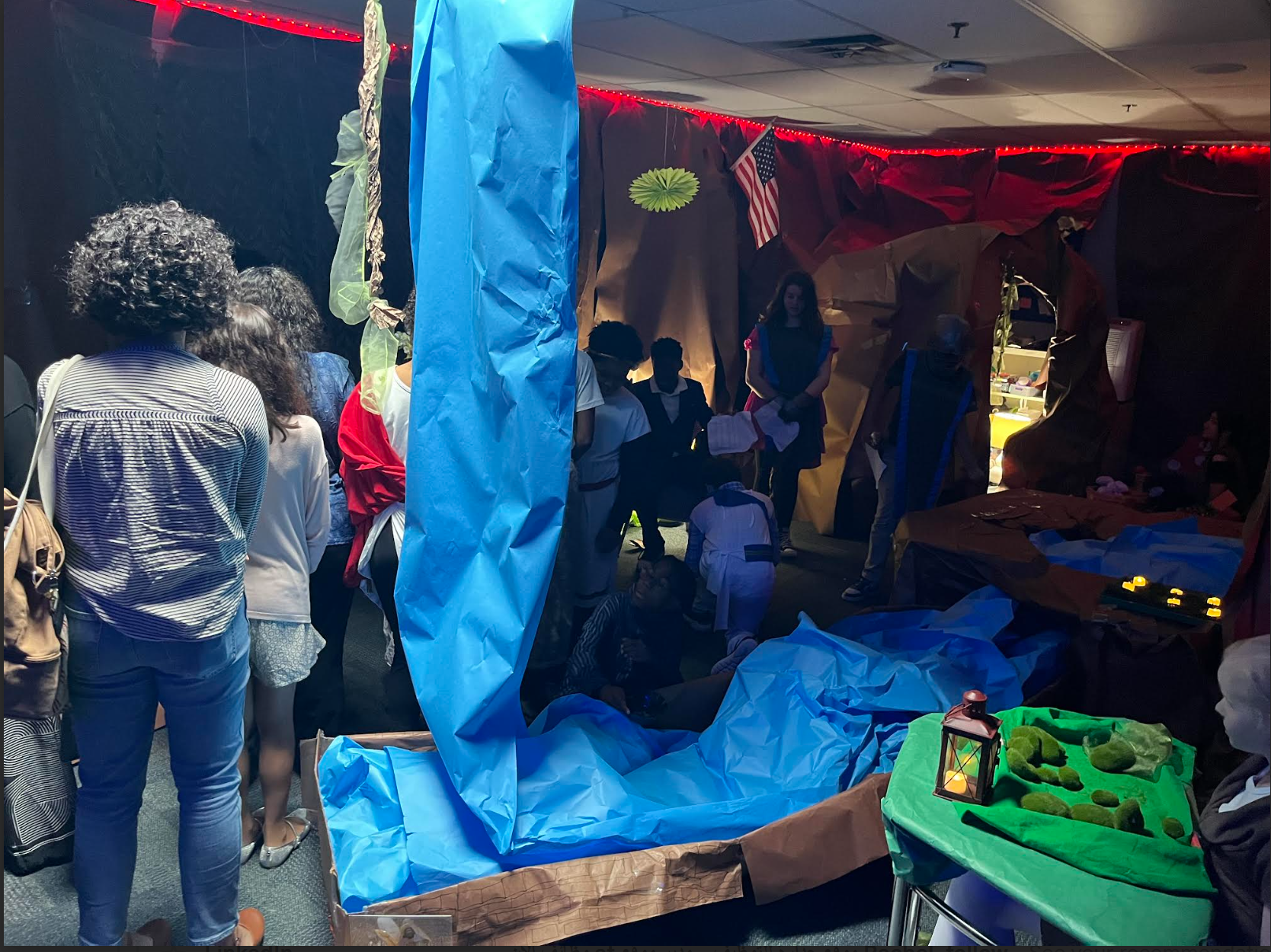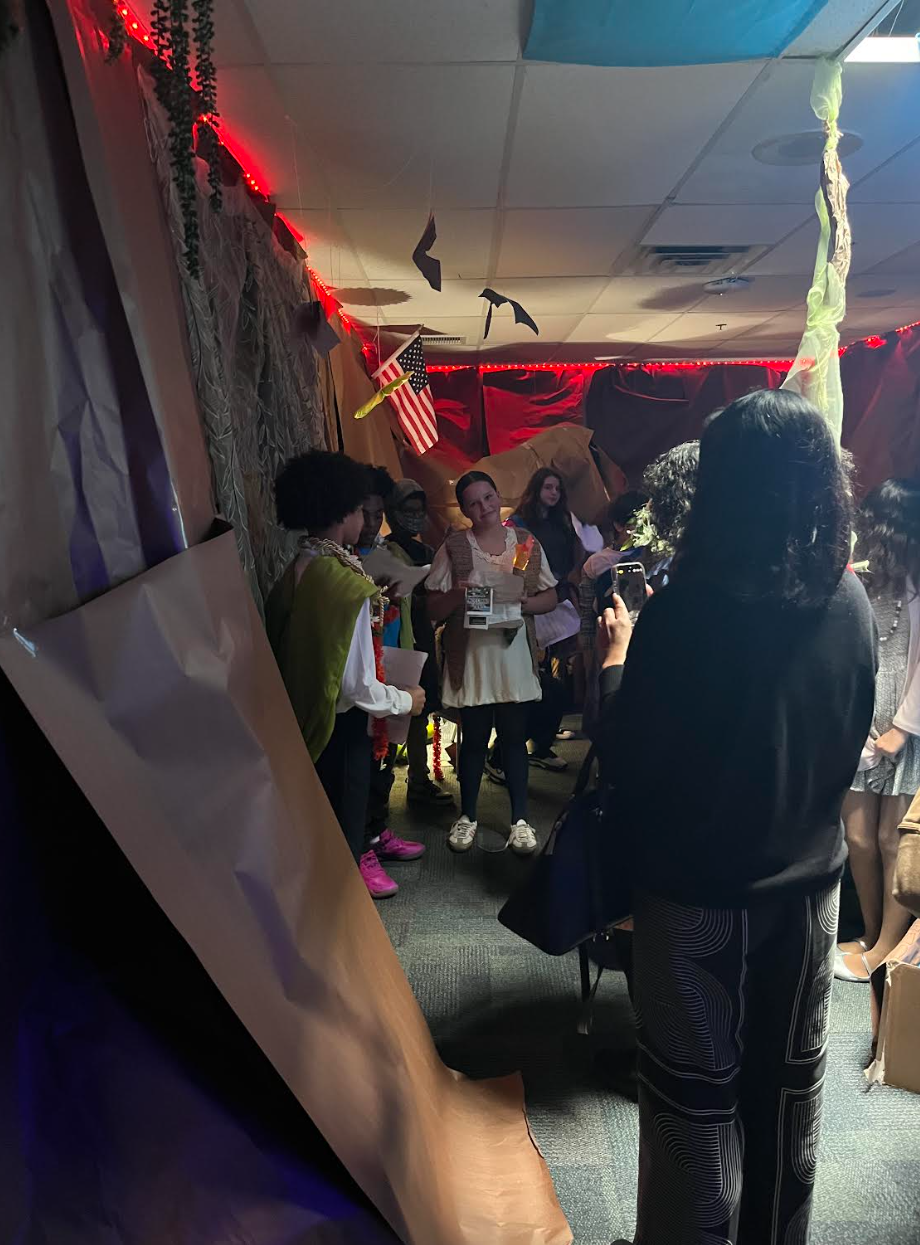Co-Creating Curriculum with AI: From Brainstorm to Bloom’s
“What if we lived underground?” one student offered.
Another replied, “We’d have to trade with the surface.”
“What kind of government would we need?” someone asked from across the room.
After months of studying ancient civilizations, exploring power structures, religion, economies, and geography, my 6th graders weren’t just analyzing systems.
They were imagining new ones.
That spark led us to co-create an underground civilization, a culminating simulation that pulled together everything they had learned through the GRAPES framework (Geography, Religion, Achievements, Politics, Economics, Social structure). But this wasn’t a scripted role-play. It was built from the ground up, by students.
And when it came time to bring that world to life for parents and classmates, we invited a collaborator into the room: ChatGPT.
Yearlong Thinking, Student-Driven Design
We didn’t start with AI.
We started with:
Comparative maps of river valley civilizations
Discussions about the generalizations we could make about early societies
Wonderings about what geography allowed or prevented
Classroom debates on trade, power, and belief systems
As we wrapped up our final units, students asked if they could design a society of their own. Their idea: a mysterious underground world, influenced by geography, resource scarcity, and a unique culture that had evolved in darkness.
This idea became our end-of-year performance task:
Build a civilization. Invite others to decode it.
Using AI to Iterate and Imagine
Once students had outlined their civilization’s politics, trade, culture, and beliefs, we took a photo of our empty classroom and fed it into ChatGPT along with a description of their vision.
Then came the magic:
AI responded with visuals that echoed the students ideas. A watersource pouring in from the ceiling, mushrooms and moss for sale on a bazaar table, bats near the ceiling.
But this wasn’t one-and-done.
We brought that feedback back to the class and asked:
“Does this feel like our world?”
“Is there anything we want to change?”
“How would we actually build that with what we have?”
We adjusted our prompts and our plans based on the responses we got, from both the LLM and the students themselves. The result? A collaborative, iterative process where AI became a co-designer, helping us test ideas, explore tone, and stretch our imaginations.
Guess Our GRAPES
Parents and peers were invited in, but not just as an audience. They were archaeologists, anthropologists, and explorers, tasked with uncovering the elements of this society based on what they observed and experienced.
Guests were asked by the students to ponder:
What does this artifact say about religion?
What kind of power structure created these laws?
What do the murals tell you about economy and culture?
Students stayed in character, responded to questions, and explained their civilization through layered understanding, not memorized definitions.
“I loved seeing people try to figure it out from what we made, because that’s how we learned about Egypt or Mesopotamia earlier this year.”
—6th grade student
From Learning to Transfer
This wasn’t just a fun end-of-year activity.
It was:
A synthesis of conceptual learning
A chance to move from knowledge to application
A moment to transfer ideas from then to now, and to us
ChatGPT played a key role, not in teaching the content, but in helping students imagine and revise how to express it.
Why It Worked
Concepts anchored the creativity
Power, geography, belief systems—students used these as touchstones while inventing and designing.AI as co-designer, not content expert
The LLM didn’t dictate our choices. It offered possibilities, and the students made the decisions.Iterative creation based on feedback
We refined both our environment and our prompts based on student critique, AI suggestions, and what we knew about our goals.
Want to Try This?
Ask students:
First to decide on a geography for a fictional society then ask, “If you had to build a civilization [in their chosen geography], what would the citizens in it need to survive? What would they believe? Who would lead? What would it trade?”
Then prompt ChatGPT (with students):
“Given this empty classroom space [insert photo or layout] and the student-designed culture below ground, what are some immersive, affordable design elements to help simulate this world for visitors?”
Let students evaluate and adapt.
Use AI not as the source of truth, but as a springboard for critique, revision, and deeper thinking.
Want Resources to do this yourself?
Part 1 FOUNDATIONS — Student-Led Inquiry
Part 2 COLLABORATING WITH AI
Part 3 DESIGN & PRESENTATION
Part 4 REFLECTION & SHARE
Reflection
This project showed my students that knowledge isn’t something you memorize, it’s something you use to imagine, challenge, and create. AI didn’t replace their ideas. It made them sharper.
And when I watched my students confidently explain their civilization to a room full of adults, I didn’t see 6th graders. I saw thinkers, builders, and future designers of the real world.
Coming Next Week:
“AI as Co-Teacher: Streamlining Inquiry in a Neurodiverse Classroom”
How structure, scaffolds, and small shifts helped ADHD and dyslexic learners thrive.






